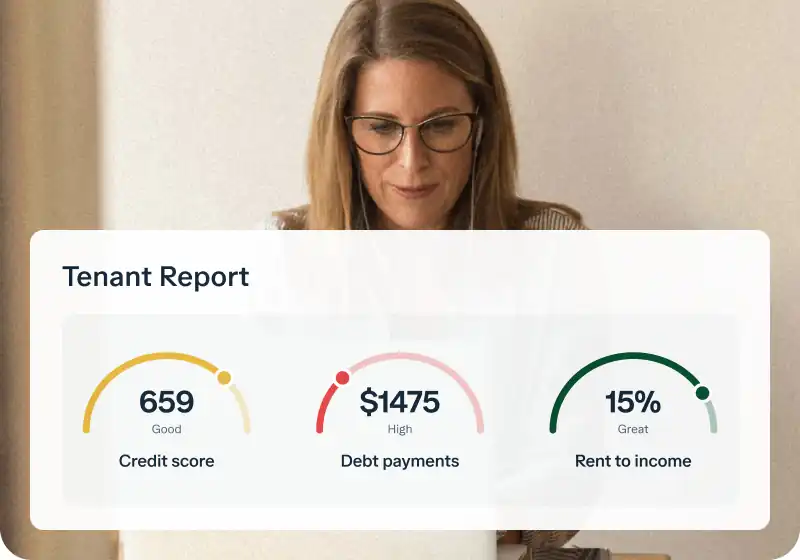Are you letting a key asset—your cash reserves, vacancy reserves, and security deposits—sit idle?
These are often thousands of dollars just sitting in a low-yield account, bringing you zero passive income. The secret to putting that money to work is understanding Annual Percentage Yield (APY).
It guides you to the highest returns by showing the true, powerful earning potential of a savings account, not just the simple interest rate alone. This guide will explain how APY works in a savings account and how you can start earning passive income on your funds.
Key takeaways
- APY reflects the true rate of return because it includes the effect of compounding.
- Compounding is when your earned interest is added back to your principal balance, allowing you to earn interest on your interest.
- Use APY to compare earnings on savings accounts and Certificates of Deposit (CDs), and use Annual Percentage Rate (APR) to evaluate the true cost of borrowing money, like a loan.
- A high-yield savings account is essential for holding large reserves, security deposits, or capital improvement funds to grow passive income. Baselane's high-yield online savings accounts can help you earn interest on these funds
APY vs. simple interest rate
To understand APY, let’s first start with the simple interest rate and how compounding transforms it.
Simple interest rate (nominal rate)
Simple interest rate (or nominal rate) is the annual percentage of your balance that you earn without factoring in the effect of compounding.
If you deposit $10,000 into a savings account with a quoted 5% simple annual interest rate (R=0.05). If interest is calculated only once at the end of the year, your interest earned would be exactly $500 ($10,000 * 0.05).
This raw, base percentage is often used in formulas, but doesn't tell the full story of your actual earnings.
The power of compounding
Compounding is the process by which the interest you earn is periodically added back to your initial principal balance. You then start earning interest on the larger, new balance. This is often referred to as earning "interest on your interest".
For landlords, having reserves sitting for a long period can be a missed opportunity. Since security deposits and reserves often sit untouched, having them in an account with frequent compounding is a massive benefit.
This is where APY comes in: APY represents your total return, including the compounding effect, over one calendar year.
The bottom line: The more frequently interest is compounded (daily is better than quarterly, for example), the greater the APY will be when compared to the simple interest rate, and the faster you will grow your passive income.
APY vs. APR: When to use each rate
When navigating lending or savings, it's easy to confuse Annual Percentage Yield (APY) with Annual Percentage Rate (APR). Using the wrong one can lead to costly financial mistakes for your real estate business.
APY is for saving, APR is for borrowing.
- When saving money (e.g., in a high-yield account or CD): You want the highest possible APY because it represents the maximum amount you will earn on your money after accounting for compounding.
- When borrowing money (e.g., a credit card or loan): You want the lowest possible APR because this is the annual cost of the loan, excluding compounding fees
How to calculate APY
While most bank websites clearly state their current APY, knowing the underlying formula gives you ultimate clarity and control over your finances. It allows you to verify that the numbers are correct and compare different compounding periods.
The mathematical formula for calculating APY is:
APY = (1+ R/N )^n - 1
Where:
- R = The simple annual interest rate (expressed as a decimal, so 4% is 0.04)
- N = The number of times the interest is compounded per year (e.g., 12 for monthly, 365 for daily)
Let's say your bank offers a savings account with a 4% simple annual interest rate (r = 0.04) and compounds interest monthly (n = 12).
- Divide the interest rate by the number of compounding periods:
0.04 / 12 = 0.00333
- Add 1 to the result:
1 + 0.00333 = 1.00333
- Raise the result to the power of the compounding periods ($n$):
1.00333^{12} = approx 1.04074
- Subtract 1 from the result:
1.04074 - 1 = 0.04074
- Convert to a percentage:
$$0.04074 * 100 = 4.074%
In this example, the APY is 4.074%.
This means that in the first year, you earn 4.074% on your initial deposit, instead of the simple 4%.
Factors influencing savings account APY
When shopping for the best bank account for your reserves and security deposits, you'll notice a significant range in APY offers. Several factors influence this rate:
- Compounding frequency: The number one factor is how often the interest is calculated and added to the principal balance (daily is better than monthly, which is better than quarterly).
- Current economic rates: Banks base their APY on the federal funds rate set by the Federal Reserve. When the Fed raises rates, bank APYs tend to follow suit.
- Account type: Online digital banking platforms generally offer higher APYs than traditional brick-and-mortar banks because they have lower overhead costs.
- Minimum balance requirements: Some banks offer tiered APYs, meaning you'll earn a higher rate if you maintain a certain minimum balance.
Traditional vs. high-yield savings accounts APY
Traditional, brick-and-mortar banks are notorious for offering incredibly low Annual Percentage Yields (APYs) on standard savings accounts. Suppose you're using a large, established commercial bank. In that case, you're likely missing out on hundreds or even thousands of dollars in passive income each year by letting your cash reserves—like security deposits, capital expense reserves, and vacancy funds—earn next to nothing. A high-yield savings account (HYSA) is the clear financial upgrade for any real estate investor looking to maximize their passive income.
The contrast between the typical savings APY at a major commercial bank and the rates offered by high-yield accounts is stark.
High-yield savings accounts pay a significantly higher interest rate compared to their traditional counterparts. Recent national averages for standard savings accounts, as reported by FDIC data, have hovered around 0.40% APY, whereas the best high-yield accounts are offering rates over 4.00% APY. This disparity means a substantial difference in your passive earnings.
Imagine you keep $10,000 in your emergency maintenance reserve account.
- At 0.04% APY (Traditional bank): After one year, you've earned a mere $4.00.
- At 4.0% APY (High-yield account): After one year, you've earned $400.00.
By switching to a better APY, you gain an extra $446 in passive income, allowing you to build generational wealth and accelerate your financial freedom.
The high-yield advantage for real estate investors
Choosing a high-yield account built for real estate investors, like Baselane's online savings accounts, allows you to grow your passive income with the cash you already have set aside.
- Monetize reserves: Earn a competitive return up to [v="apyvalue"] APY² on all deposits—including the security deposits and repair reserves you're legally required to keep separate.
- Keep funds accessible: Unlike CDs, high-yield savings accounts maintain liquidity, meaning your cash is instantly available for unexpected maintenance or vacancy costs without penalty.
- Simplified compliance: Baselane's ability to offer unlimited savings accounts makes it simple to separate funds for each property and security deposit, allowing you to comply with state-specific regulations while maximizing your earnings.
How to find the right platform that offers high-yield savings account
Look for the following features to find the right banking platform that helps you grow your savings through higher APYs and integrated features.
- High APYs: Look for competitive APY rates (>2.5%) that are significantly higher than the national average, ensuring your cash reserves actively generate passive income.
- Integrated features: The best banks for landlords have built-in bookkeeping and rent collection. This eliminates the need for expensive third-party tools.
- Dedicated accounts: Find banks that offer unlimited accounts per property, unit, and security deposits. This key to avoiding commingling and simplifying your accounting.
- No fees or minimums: Choose an account with no monthly maintenance fees and no minimum balance requirements to ensure your earnings aren't chipped away.
- Property-specific accounting: The best options simplify tax preparation by automatically categorizing and tagging transactions by property and Schedule E category.
When choosing a bank for your rental property business, comparing APY is crucial, but also look for other features offered. Check out the guide on the best bank for real estate investors to find your ideal fit.
Earn higher APY with Baselane
Baselane is one of the best financial platforms that not only offers [v="apyvalue"] APY² on your savings but a whole range of integrated features to centralize your rental finances. You can open unlimited savings accounts and keep your security deposits, emergency reserves, and earn passive income on that balance.
And, with our integrated bookkeeping, you get a clear trail of transactions tied to each property and schedule E category, simplifying tax reporting.
Open your free Baselane account today to start putting your funds to work.
FAQs
What is Annual Percentage Yield APY?
Annual Percentage Yield (APY) is the effective annual rate of return on a savings account that includes the effect of compounding interest. It shows the actual return earned over one year if interest is added back to the principal.
How is APY different from a simple interest rate?
A simple interest rate is the nominal rate before compounding. APY takes into account how often interest is compounded and added to the balance within a year, providing a higher effective rate than the simple interest rate.
Does compounding frequency affect APY?
Yes, the frequency of compounding directly affects the APY. Assuming the same nominal rate, interest compounded more frequently (e.g., daily vs. monthly) results in a higher Annual Percentage Yield because you earn interest on your accumulated earnings more often.
Why is APY important for savings accounts?
APY is important for savings accounts because it provides a standardized measure of the return earned, factoring in compounding. This allows you to accurately compare the earning potential of different savings accounts from various financial institutions.

















